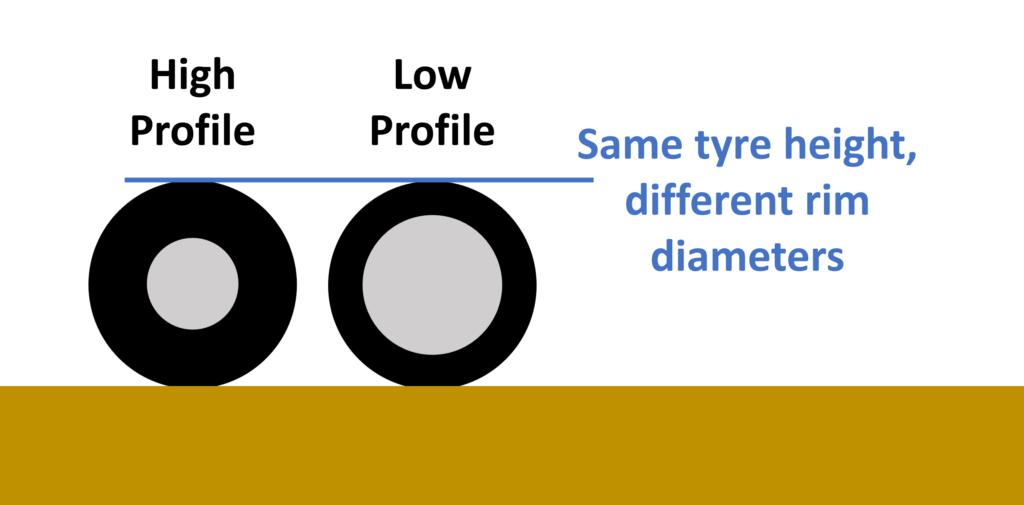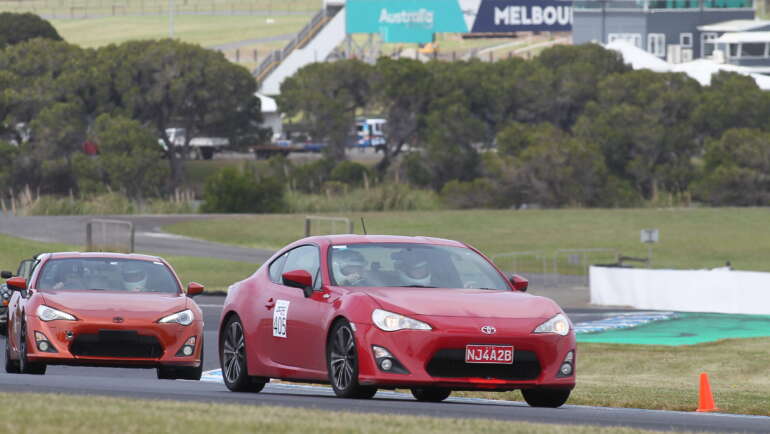
Why does EV range decrease with larger wheels/rims?
Electric vehicle range – how far you can travel on a charge – is a hot topic and as ever, the exact range figure will vary depending on the model of the car and even how it’s optioned, let alone how it’s driven and where it’s driven.
One surprising factor that affects range is wheel size.
Now to clarify a common point of confusion caused by vague car terms, I’m talking here about the size of the rim which is the metal bit of the wheel. When we talk of different wheel (rim) sizes, we mean the tyre width and diameter remains the same, just the ratio of tyre to rim.

So let’s take an example – the Lotus Eletre comes with 20″ wheels as standard and does up to 600km. You can option 22″ wheels but range drops the 527km, and 23″ wheels gives a range of only 492km.
And from https://toka.energy/: Tesla Model S P100D, a 19-inch tire uses about 5% less energy than a 21-inch tire. For Tesla S 60D / 75D / 90D models, the difference is almost 12%. And on the Tesla Model X P100D, the difference is even greater: 20-inch tires provide a 23.3% reduction in energy consumption compared to 22-inch tires.
So why the difference? There’s a few factors involved:
1. Extra mass, and rotating mass
Take two identical tyre/rims except for rim width. So both tyres are say 235mm wide and 750mm tall, but one has a 17″ rim and the other a 22″ rim. The 17 will be lighter, and importantly, that’s rotating mass. Now think of the car travelling 100m down the street. The wheels will have moved 100m, just like the doors, the motor and the battery. But unlike those components the wheels will also have rotated around 42 times as well as moved 100m. So, it takes energy to rotate the wheels…and that’s why rotating mass is critical. In fact, mass on the wheels takes around 1.6 more energy to move down the street than mass which is part of the body or chassis. The wheel mass is also unsprung, which isn’t good for handling but that’s not an efficiency problem.
2. Tyre compound and design
You want a tyre that’s grippy in the wet, in the dry, and maybe on dirt roads. You want the tyre to be quiet, long-lasting, sharp handling, cheap, last a long time and for EVs, have a low rolling resistance so you can have a longer range. OK, now choose two or three of those, because each of them represents a compromise. EV tyres are designed for lower rolling resistance, and to handle the higher weight of EVs so fitting standard car tyres, or performance-oriented tyres will compromise efficiency and reduce range.
3. Tyre dimensions and energy use
Wider tyres handle better (on dry roads at least) and there’s a looks factor. It could well be at that aside from being lower profile, the tyre dimensions are wider (but unlikely to be taller), for example going from a 245mm wide tyre to a 255. That may well improve handling, but it’ll also increase weight still further, and add drag, both of which compromise range. In the case of the Eletre above, the 20s are 255mm wide on the front and 285 on the rear, whereas the 22s are 275mm on the front and 315mm on the rear. Yet more rotating mass!
4. Higher spec cars are heavier
The more expensive a car, the more features it tends to have, and the heavier it is. EVs deal quite well with weight, but still….heavier cars required energy to move.
What should I do with my tyres for maximum EV range?
So if you want the ultimate range from your EV, fit the highest profile (smallest rim) wheels you can, and choose the lightest wheels which are usually the forged alloy type. Then fit the narrowest tyre you can, and make sure that tyre is an EV tyre with a focus on efficiency. Ideally, the rims you fit will be aerodynamically efficient, as EVs are very sensitive to drag so improving aerodynamic slipperiness is important.
If you do the opposite – a low profile, heavy rim with a wide performance-oriented tyre – then expect your range to drop, but the car will grip the road better. As ever, life’s a tradeoff!
The video below focuses on 4X4s but explains the pros and cons of high and low profiles:
This video explains the pros and cons of wide vs narrow tyres:


